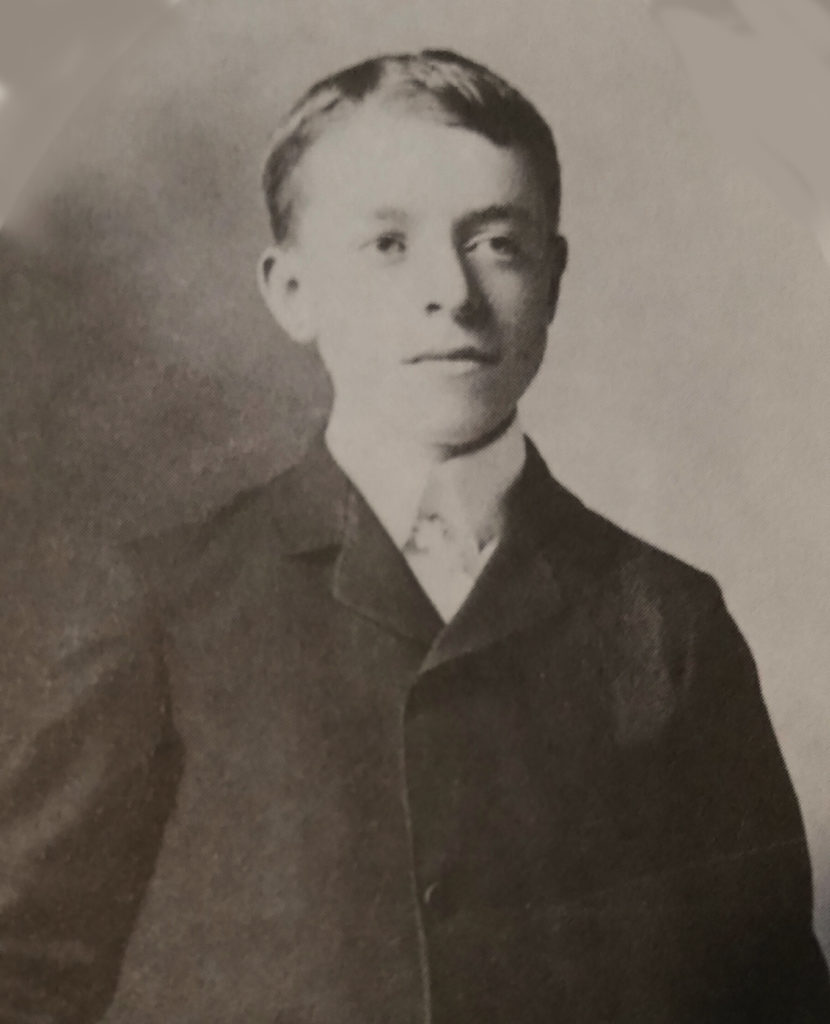
By Don Radebaugh — When Fleetwood Lindley died in 1963, he would officially go down in history as the last person to have looked upon the face of Abraham Lincoln, albeit the “viewing” came 36 years after Lincoln’s death. Lindley was among several other witnesses who “signed off” on the 16th President before he was buried for good in 1901.
Lindley was 75 years old in January of 1963 when he was interviewed for the final time.
“I was allowed to hold one of the leather straps as we lowered the casket for the concrete to be poured,” Lindley told a reporter from Life Magazine. “I was not scared at the time but I slept with Lincoln for the next six months.”
Just three days later, Lindley died. His family buried him at Oak Ridge Cemetery in Springfield, Illinois, the same hallowed grounds that hold Abraham Lincoln.
As fascinating as Lincoln’s life was, his story in death is bizarre beyond the definition of the word. In between his final breath in 1865 and his final burial in 1901, his body was, not only moved more times than we absolutely know, but nearly stolen by counterfeiters. His corpse was moved so much over the years that twice the lid on his coffin was removed so that it could be verified that it was indeed the body of Abraham Lincoln that they were about to bury…the final time with steel and concrete all around.
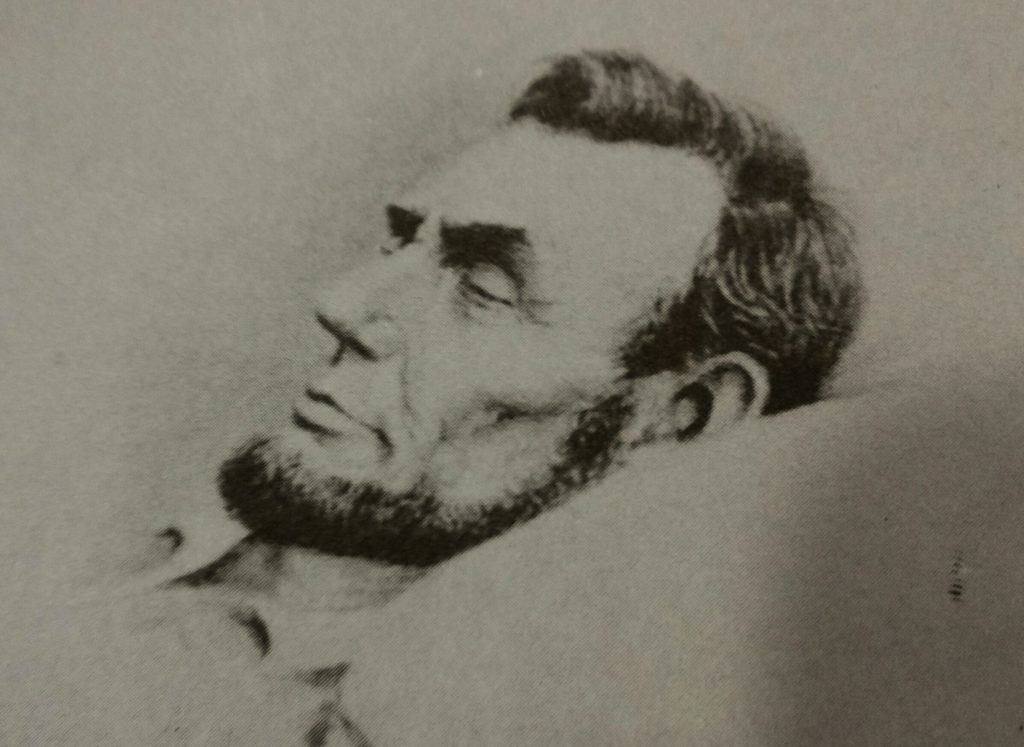
The “bizarre” part of the story starts from the very beginning, or in Lincoln’s case, from the end. After Lincoln’s body was removed from the Petersen boarding house where he died on Saturday morning April 15, 1865, he was carried to a guest room in the northeast corner of the second floor of the White House. It was there that Army assistant surgeons J. Janvier Woodward and Edward Curtis did the autopsy.
“Dr. Woodward and I proceeded to open the head and remove the brain down to the track of the ball. Not finding it readily, we proceeded to remove the entire brain, when, as I was lifting the latter from the cavity of the skull, suddenly the bullet dropped out through my fingers and fell, breaking the solemn silence of the room with its clatter, into an empty basin. There it lay upon the white china, a little black mass no bigger than the end of my finger — dull, motionless and harmless, yet the cause of such mighty changes in the world’s history as we may perhaps never realize.”
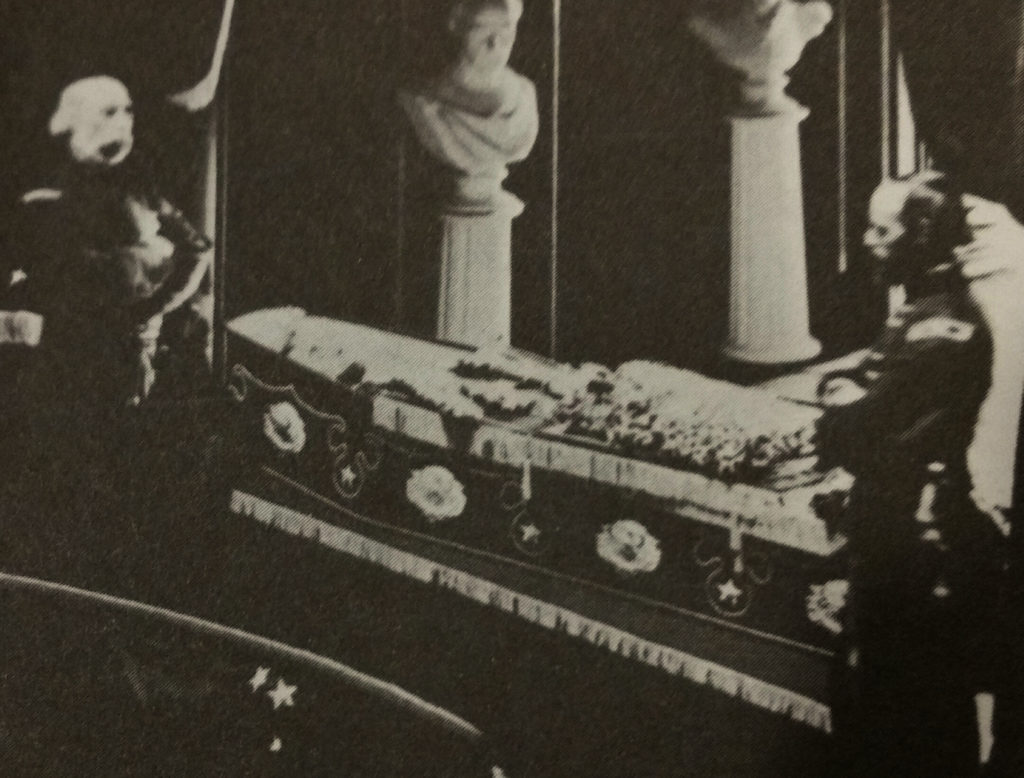
After the autopsy was complete, master embalmer Henry P. Cattell made an incision in Lincoln’s right upper thigh and pumped in zinc chloride, giving the appearance of a marble sculpture. As a final touch, Cattell set his mouth in a slight smile before he was then dressed in the same black Brooks Brothers suit he had worn during his second inaugural address in early March. While workers went to work on building the platform that would hold his coffin in the East Room of the White House, Lincoln was moved into his newly-built solid walnut coffin. By the evening of Monday, April 17, Lincoln was ready for his first official viewing. On Tuesday, 25,000 people passed by his coffin to pay their respects. Later that evening, a private viewing took place. At 10 minutes past noon Wednesday afternoon, Lincoln’s funeral service began. Following the two-hour service, they closed the lid on Lincoln in preparation for his funeral procession that led to the Capitol where thousands more would shuffle past his coffin Thursday. On Friday morning, April 21, his body was escorted to the Baltimore and Ohio Railroad train station for his long journey home to Springfield.
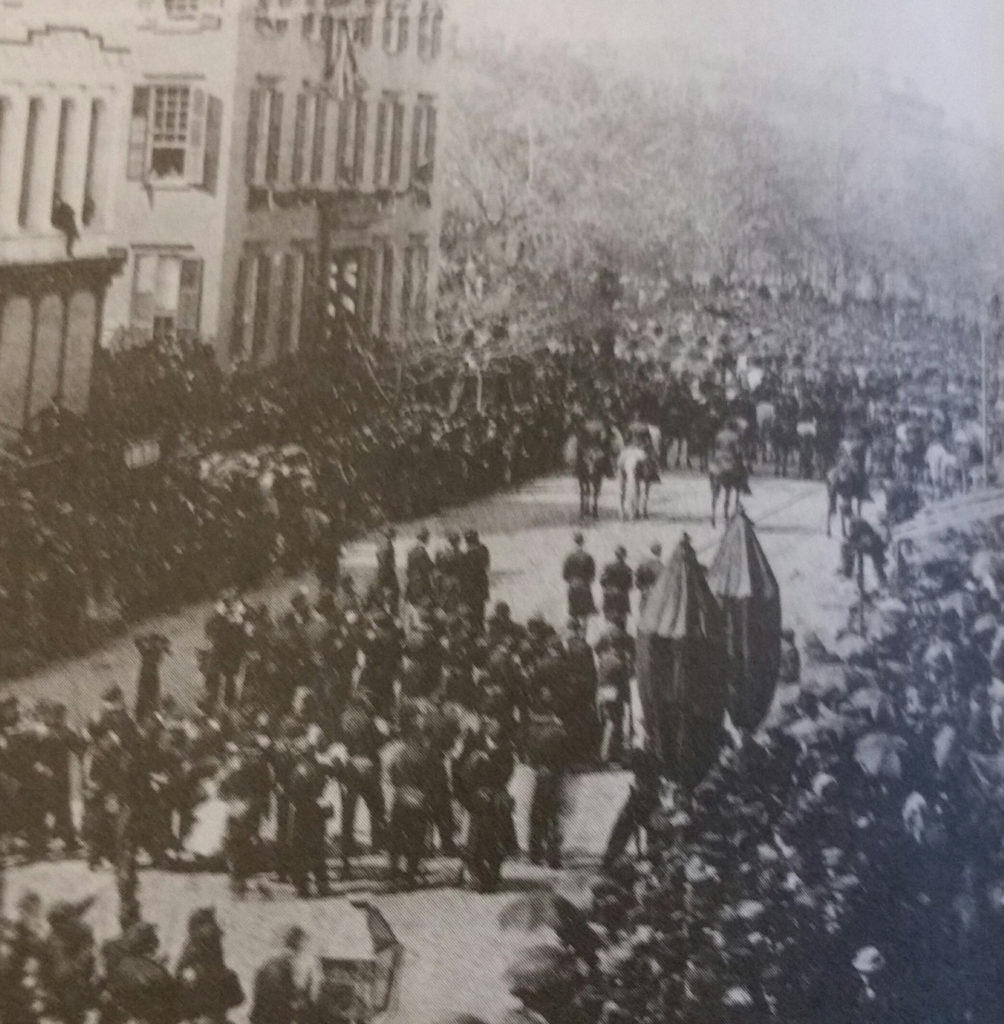
In between, and for nearly two weeks, Lincoln’s body would be removed from the train and go on display for public viewing and funeral ceremonies in 10 cities: Baltimore, Harrisburg, Philadelphia, New York, Albany, Buffalo, Cleveland, Columbus, Indianapolis and Chicago. Several other cities were turned away. Lincoln’s funeral train finally arrived in Springfield on the morning of May 3 where he was then moved to the Old Capitol for more public viewing. Springfield, dressed in black with thousands of mourners lining the streets, had grown from a city of 12,000 to 150,000. Before the public was admitted to the Hall of Representatives in the Old Capitol, undertakers raised the coffin lid for a routine examination and found that Lincoln’s face had darkened. Thomas Lynch, the local undertaker, made a beeline for the nearest drugstore and purchased rouge chalk, amber and some brushes.
“I at once set about coloring the President’s features, placing the materials on very thick so as to completely hide the discoloration of the skin. In half an hour I had finished my task and the doors were thrown open to the public.”

After all that, there was yet one more journey for Lincoln when on May 4 the final procession carried his remains to his final resting place at Oak Ridge Cemetery two miles north of the statehouse. He was laid to rest at the base of a hill alongside his son Willie Lincoln inside a receiving vault, the same hill that would one day become the foundation for his tomb. For all intents and purposes, Lincoln’s long journey was finally over, or was it?
In fact just seven months later, in December of 1865, Lincoln’s remains were removed to a temporary vault not far from the receiving vault, about halfway up the hill. There, he and his son Willie would lay for six years, until 1871 when Lincoln, along with his three younger sons were placed in crypts inside the unfinished tomb which construction began on three years earlier. In 1874, after the memorial tomb had been completed, Lincoln’s remains were interred in a white marble sarcophagus in the center of the rear chamber known as the catacomb. That meant that just one rear door with one padlock separated the body of Abraham Lincoln from the rest of the world.
No doubt grave robbers were well aware of the easy access to Lincoln when the same criminal counterfeiters devised a cockamamie plan to steal Lincoln’s remains and hold the body for ransom. They chose the night of Nov. 7, 1876 to carry out their plot. It was election night in America so they figured that most in Springfield would be preoccupied with election results. That part of the plan seemed to make sense; however, Secret Service operatives had already been tipped off and were waiting for the grave robbers inside Memorial Hall where Lincoln lay.

First, the grave robbers hack-sawed and filed through the padlock. Once inside, they jammed a crowbar beneath the sarcophagus lid, pried it open and lifted it off. Then they went to work removing the marble panel at the foot of the sarcophagus. Once they cut through the panel, they tried to drag the coffin out but the double-layered lead and cedar coffin was too heavy, so they sent one man down to fetch a fourth man who was waiting just outside the cemetery gates with a wagon ready to make off with their prize.
Then detective George Hay’s pistol, already cocked, accidentally went off, which must have rang out like a cannon in the silence of the cemetery. The robbers immediately dropped their tools and fled. Now, without hope of catching them by surprise, the would-be grave robbers escaped, but not with Lincoln’s remains. They made it all the way to Chicago before they were soon apprehended and arrested for the crime. Despite the speedy capture, Lincoln’s sarcophagus had been badly vandalized. The night was a complete fiasco for the Secret Service.
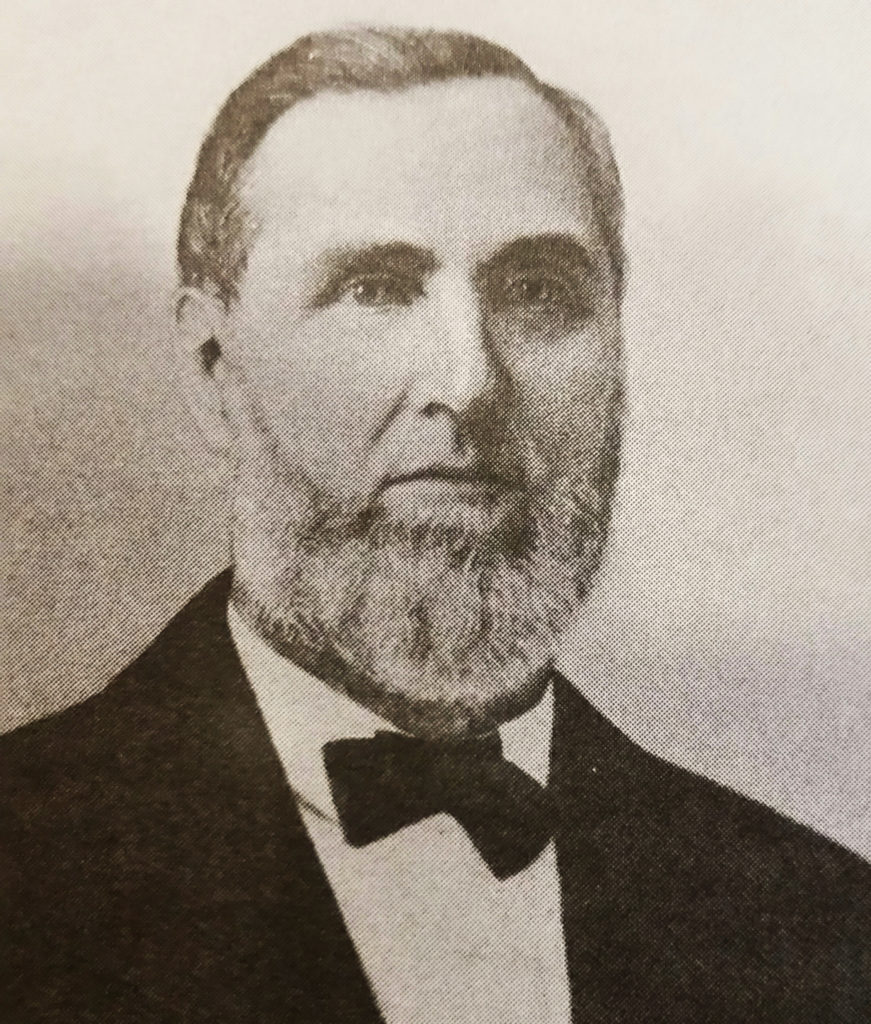
Shocked by what could have happened and determined to prevent it in the future, the custodian of the tomb, John Carroll Power, devoted the rest of his living days to the protection of Lincoln’s remains. Eleven years after his assassination, Lincoln was still a target. No one understood that more than Power.
After Lincoln’s partially removed coffin had been refitted back inside the sarcophagus, one week later, on the night of November 15, 1876, five workmen, under the direction of John Todd Stuart, chairman of the Monument Association, and Power, broke the seal on the sarcophagus again and removed the coffin. Lincoln’s journey was clearly not yet complete, and what happened next was just as bizarre as the attempted robbery. The men lugged the coffin, which weighed between four and five hundred pounds, outside, through the main entrance of Memorial Hall and down to the basement where it was fitted into a wooden crate. The next morning Power started digging a shallow grave in the damp, dirt-floor basement. Unfortunately, Power soon struck water. Since they couldn’t lay Lincoln’s remains in a puddle, Stuart advised Power to lay Lincoln on some wooden planks, off the damp dirt floor, beneath a pile of old lumber until they could figure something else out. For the next two years, the body of the 16th President remained in a damp basement under a pile of mildewed wood while tourists, for 25 cents a pop, looked upon the marble sarcophagus in the catacomb under the belief that Lincoln was inside, when, in fact, he was not.
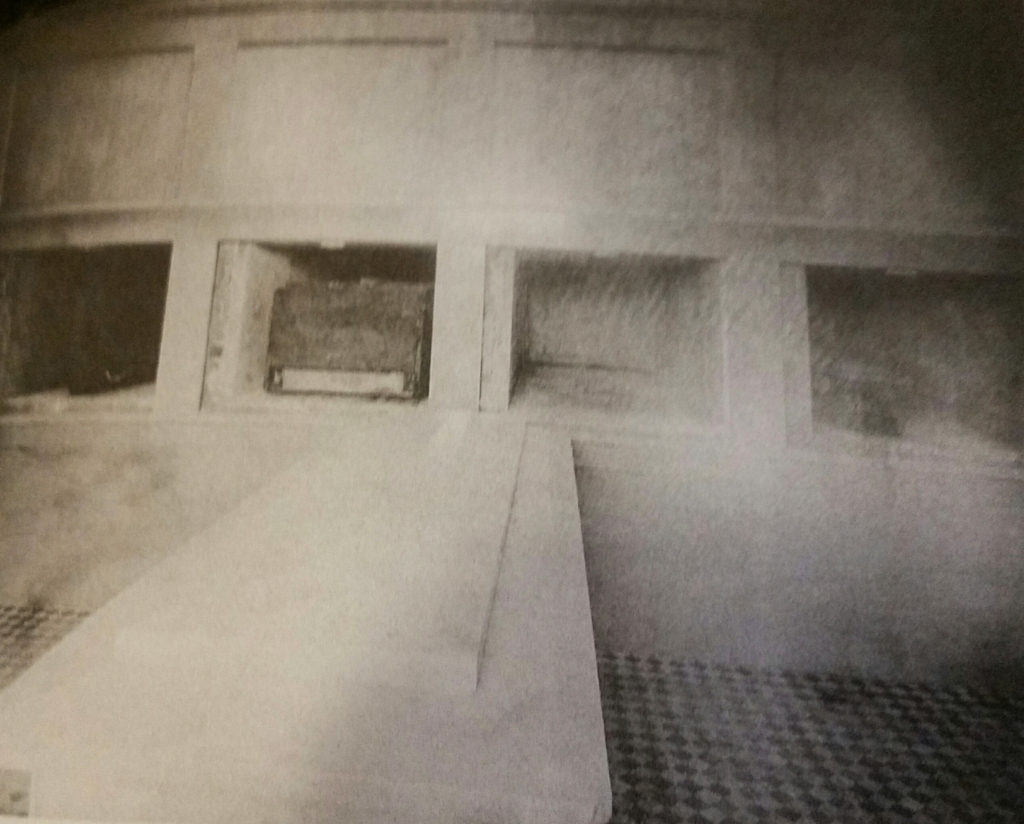
Then Power discovered that his assistant was not only full of gossip, but pocketing a portion of the 25-cent entrance fee. Stuart and Power decided to move Lincoln again. On the night of Nov. 18, 1878, two years and 11 days after grave robbers tried to steal Lincoln, he was moved into a shallow grave at the north end of the basement, just low enough as to not reach the water table, and high enough to be clearly visible. For good measure, they scattered some debris and bricks over Lincoln’s grave to create the appearance that the area had been left untouched ever since the builders had laid the foundation for the monument.
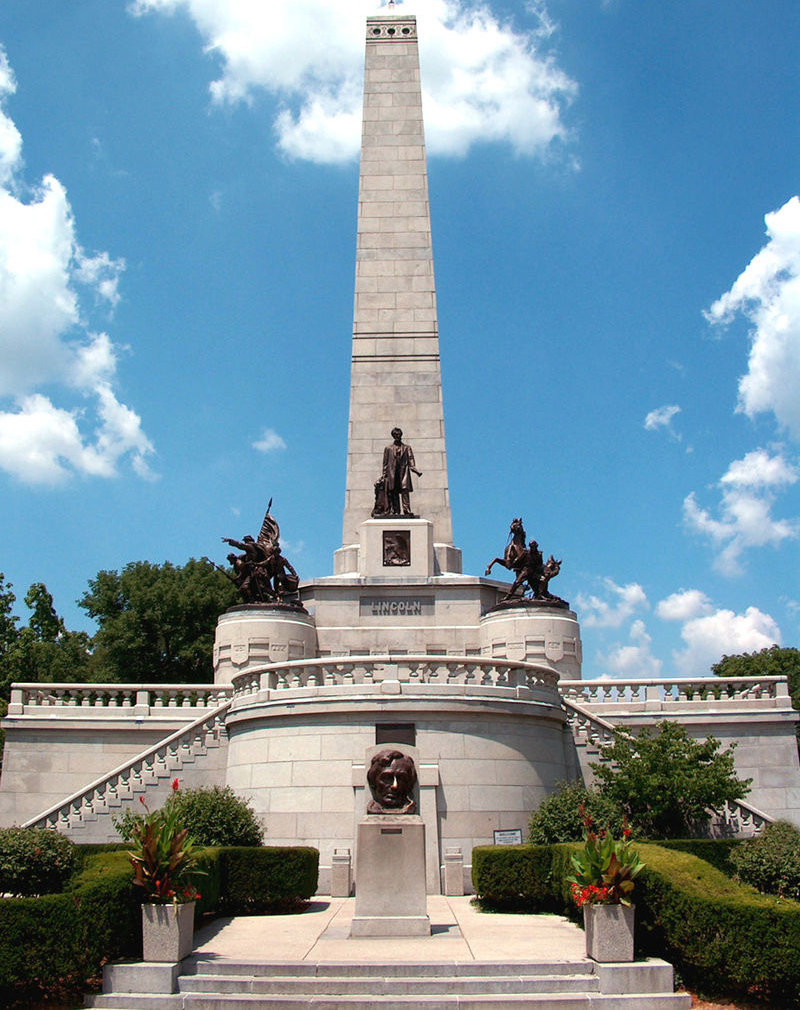
As you might expect, rumors had been circulating since the attempted robbery that Lincoln was somewhere else other than inside the sarcophagus. It seemed to be one thing after another for Power who continually fretted over the situation he oversaw as the custodian. When Mary Lincoln died in July of 1882, thousands of spectators lined the streets of Springfield to watch the funeral procession en route to Oak Ridge Cemetery. At the tomb, she was slid into the crypt beside her three sons. She did not stay long. Later that night, at the request of Robert Lincoln, their only surviving son, members of the Lincoln Honor Guard removed Mary from the crypt and secretly carried her coffin to the basement where she occupied a shallow grave alongside her husband.
In February of 1884, a portion of the tomb’s foundation collapsed and it took all summer for workmen to rebuild the foundation, which required access to the basement. All this while Power worried about the dark secrets that lay down in the musty hole. Then, in 1887, Power took it upon himself to consult a local contractor about a solution to safeguarding the President’s body. The contractor proposed digging a 6-ft. vault inside the catacomb chamber big enough to accommodate an 18-inch thick wall of brick. Once Lincoln was inside, the area would be filled with cement, completely sealing the coffin. In just three days, the vault was built and ready for the President and his wife. April 14, 1887, the 22nd anniversary of Lincoln’s death, was set as the day for the exhumation and reburial of Abraham and Mary Lincoln. By now, the secret was out that Lincoln had not been inside the handsome marble sarcophagus for the last 11 years. When the ceremony concluded, members of the Monument Association, “by mutual agreement, decided that in order to satisfy the reasonable expectations of the people, after so many changes, it was indispensably necessary to identify the body of the President.”
As the lid on the cedar coffin was pealed back, onlookers soon discovered that the remains were “somewhat shrunken” but no one doubted they were looking upon the face of Abraham Lincoln.
Power, the custodian of the Lincoln Monument, was among those present and described his features as “almost as perfect as they are in the bronze statue on the Monument and the color is about as dark as the statue.” A reporter for the local paper agreed. “The remains were a remarkable case of preservation,” he wrote. “Those who stood around and had known Lincoln when alive easily discerned the features. They were very distinct.”
Lincoln was finally at rest; or was he?
By 1900, the Lincoln Monument was in poor shape, its foundation unstable with water seepage between the inner and outer walls. The monument would have to be completely rebuilt from the ground up, which meant the bodies of the entire Lincoln family would have to be removed during reconstruction of the tomb. It took workers a week to hack through the solid cement around Abraham’s and Mary’s outer wooden coffins, only to find that water damage had reached here, too.
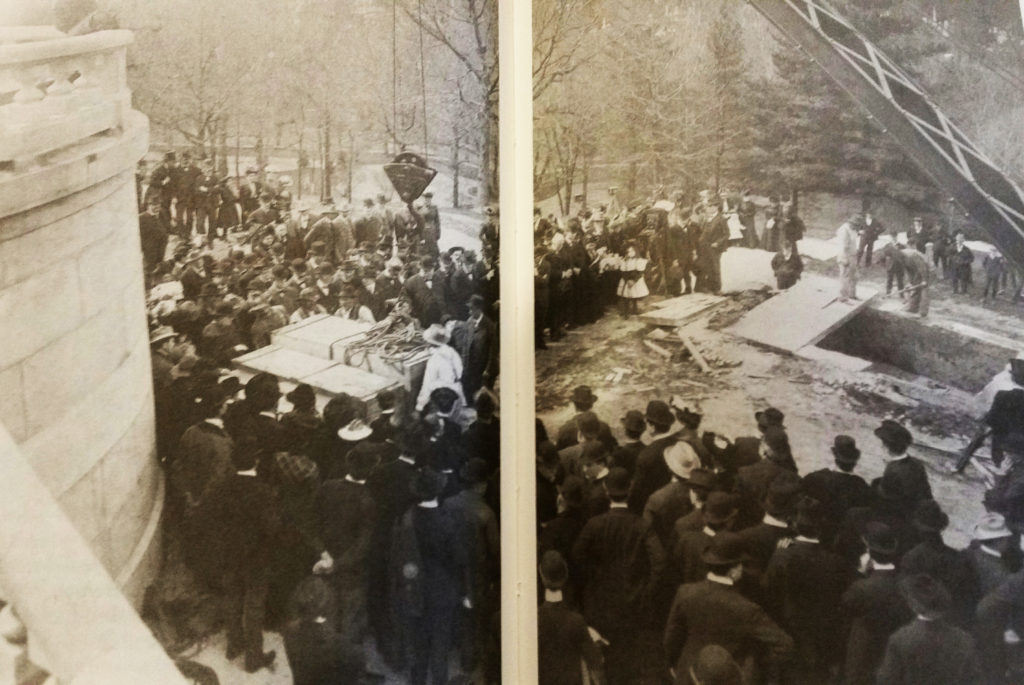
The transfer took place on March 10, 1900 when a big crane lifted the lead coffins, swung them over and lowered them into yet another temporary tomb beside the Lincoln Monument. Inside the temporary tomb were Abraham, Mary and their three sons, plus Abraham Lincoln II, Robert’s boy, who died when he was just 16. The six Lincolns stayed in the temporary vault for 18 months while the construction crews rebuilt the Lincoln Monument.
September 26, 1901 was the day chosen for the reburial. Against Robert Todd Lincoln’s wishes to not open the casket of his dead father one final time, members of the Lincoln Guard of Honor agreed to ignore Robert’s request and opened the coffin.
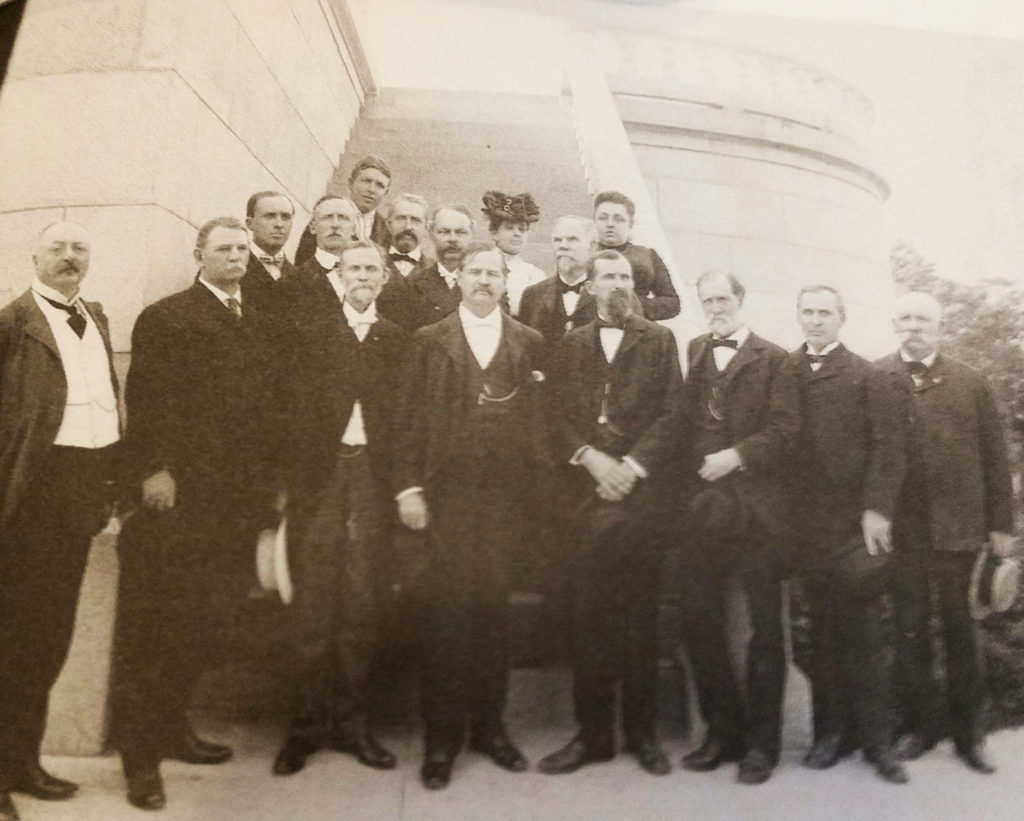
Thirteen-year-old Fleetwood Lindley was in school when he received an emergency message from his father. Lindley, all the while wondering what could be so urgent, hopped on his bicycle and pedaled as fast as he could to Oak Ridge Cemetery. Once inside the dark, musty Memorial Hall, Leon Hopkins, who had done the same 14 years earlier, peeled back the metal while at least 16 witnesses looked upon the face of Abraham Lincoln. Lindley recalled years later that “a sharp, unpleasant odor filled Memorial Hall, yet in spite of that, everyone pressed forward to look inside the casket.”
There was Abraham Lincoln perfectly preserved, the wart on his cheek still clearly visible as was the beard on his chin that reached up to his unruly black hair. Where some of the makeup was gone that the undertaker Thomas Lynch had applied in 1865, Lindley and the witnesses could see that Lincoln’s skin was now the color of bronze. The identification complete, Hopkins closed the lid and resoldered the lead. A work crew was called into Memorial Hall from outside. The crew enclosed the coffin in the steel cage, lowered it into the vault and covered it with wet cement.
The body of President Abraham Lincoln was/is now and forever, finally resting in peace, or not?
Find the History Mystery Man on Facebook and YouTube. Or follow me on Twitter & Instagram at History Mystery Man.
Sources:
‘Stealing Lincoln’s Body’ by Thomas J. Craughwell, copyright 2007.
‘Lincoln’s Photographs, A Complete Album’ by Lloyd Ostendorf, copyright 1998

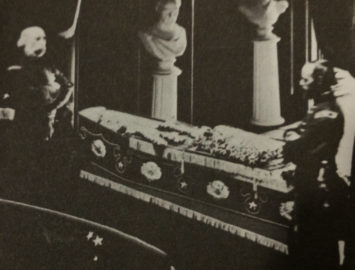
I got to know Abe Lincoln when I was just a boy by means of books, movies and stories. To think how much a role he played for the goodness of mankind, it’s no wonder why he is so steeped in tradition. And yes, his death was something I also remember, but to loose his son Willie back in 1862 was something I could not get over, especially knowing his father could not except his death until a week or two of his passing.
Abe’s passing did in fact leave something for us all to behold, but now that his family and him are finally buried in a peaceful setting, let’s hope that the man above will indeed say ” Lincoln Did His Best in times of war and during the best of times.
Although I was aware of much of this information (not all), it was great to read it all in one well-written article. After I read it, I looked at the signatures of Robt Lincoln and John Stuart that are framed together on one of my walls with greater appreciation.
I’ve heard that LIFE Magazine published photos of Lincoln before he was buried for the final time. Anyone know?
Early in 1963, LIFE magazine did print an article on the burial of Lincoln in 1901 with photos of the event. Check on the web for additional photos of the event that were not used with the article. Alan Leake
Thanks Alan…I’ll check that out!
DR. ABRAHAM LINCOLN IS THE GREATEST AMERICAN WHO EVER LIVED. IT SEEMS THAT THE ONLY PEACE HE EVER ACHIEVED IS WHEN HE IS IN ETERNAL REST. GOD BLESS DR. ABRAHAM LINCOLN!
I saw this story on the History Channel some time ago. I was amazed how this great man was treated in death. Thank you.
The only thing missing to this excellent account is the fact that the photograph was not discovered for some 87 years until I found it on July 20, 1952 and I was acquainted with Fleetwood Lindley–two teen-agers who contributed to the Lincoln Story. Fleetwood was 13 years old when he accompanied his father to the final burial. And I was 14 years old when he discovered this last photo taken of President Lincoln–in death.
Why, do you suppose, Lincoln’s body is so important compared to so many other dead presidents? The civil war? It seems like there is something more to it…
Dang, the best US President ever didn’t get to rest his bodily remains in peace for a da*m long time.
I grew up in Petersburg and spent my youth visiting New Salem for their events and then also after I move to Springfield taking all of my relatives, over the following decades, to all of the Lincoln places. However, I still had not realized that his body had been moved so many times. This is a very informative and interesting article. Thank you and I’ll have more to tell when I give free tours !
Hi! I read this story several times before but enjoyed reading it again. Liked your way of narration a lot. By the way, your alias is fantastic! I am a lover of both ‘history’ and ‘mystery’ myself and glad to see how you combined them. Any kind of history has some element of mystery about it, isn’t it?
Regards.
Don, having not heard this story, I was amazed at how it took so many years to settle the President’s remains into a final, safe resting place.
Hi Ellen. Thanks for taking the time to read it…much appreciated. Can’t believe all that happened to Lincoln, after his death.
I appreciate reading a part of history that is very good that Lincoln’s body is finally resting and won’t be disturbed any more. Lincoln was a good man and president I don’t why people would dig up a dead body and steal it that is so wrong. Than you for writing this.
I’ve waited for this story to appear since we discussed it in July at Iowa. Very interesting as usual!
Thanks Terry…I enjoyed writing it. As always, I appreciate your input. See you at Daytona!
Absolutely fascinating! Thank you so much for this story.
Thanks Sue…appreciate you taking the time to read it!